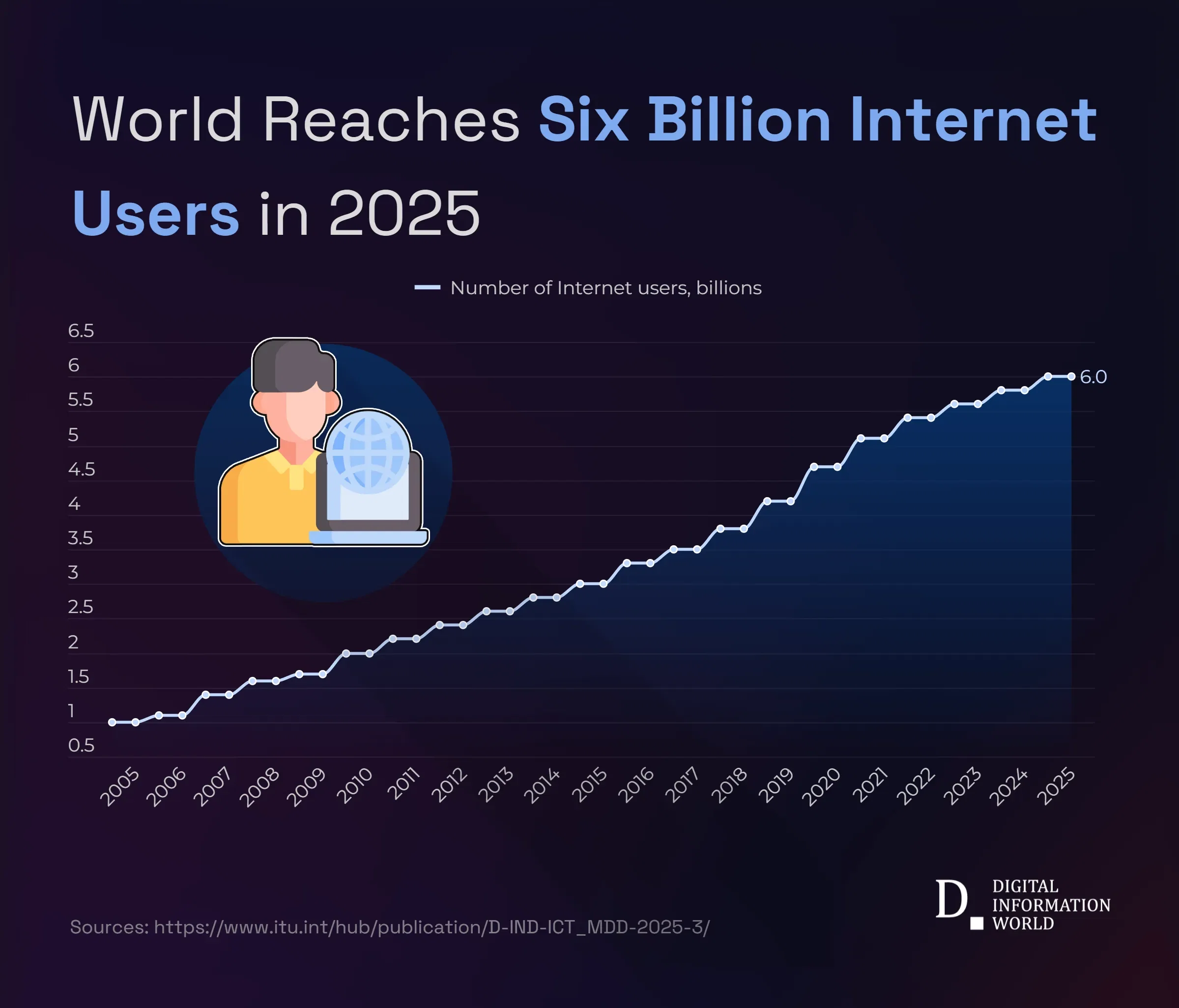Where Data Tells the Story
© Voronoi 2025. All rights reserved.

Global Internet use keeps expanding, reaching 6 billion people in 2025, or about 74 percent of the world. The figures come from the latest international dataset on global connectivity by ITU, which shows the offline population falling to 2.2 billion but also confirms that the gap between rich and poor countries is holding firm.
High-income economies record 94 percent Internet use. Low-income economies remain far behind at 23 percent. Africa sits at 36 percent, while LDCs and LLDCs stay in the mid-thirties. Europe, the CIS, and the Americas cluster near the upper eighties and low nineties, while Asia Pacific and the Arab States reach 77 and 70 percent.
Basic demographic patterns stay uneven. Men reach 77 percent usage and women reach 71 percent. Youth adoption rises to 82 percent, ahead of the 72 percent rate among older groups. Urban areas reach 85 percent while rural areas fall to 58 percent, with the widest gaps in low-income regions.
Network quality splits the world even further. Around 55 percent of the global population now lives within 5G coverage. High-income economies reach 84 percent coverage, while low-income economies reach only 4 percent. Many communities still depend on older networks, and roughly 312 million people have no mobile broadband coverage at all.
Subscription trends follow the same divide. The world holds 9.2 billion mobile-cellular subscriptions, equal to 112 per 100 inhabitants. High-income economies reach 142 per 100, while low-income economies reach 70. Mobile broadband subscriptions average 99 per 100 worldwide, though Africa sits at 56. About 36 percent of mobile broadband subscriptions are 5G, with adoption in low-income regions barely visible.
Affordability slows adoption across much of the world. A 5 GB mobile data basket has a median cost of 1.4 percent of GNI per capita, yet users in low-income economies spend about 22 times more of their income on mobile data than those in high-income economies. Fixed broadband remains even costlier. Mobile phone ownership reaches 82 percent globally, but only 53 percent in low-income economies, and women remain behind men on nearly all ownership metrics.
More people are coming online, yet the pace of improvement in cost, speed, and coverage tilts heavily toward countries already ahead, leaving the lowest income regions with the slowest gains.